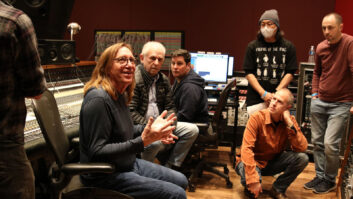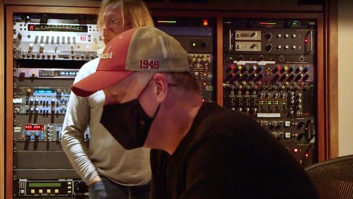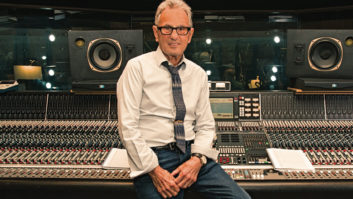
The METAlliance — Al Schmitt, Chuck Ainlay, Elliot Scheiner, Frank Filipetti, George Massenburg and Niko Bolas, along with the late Phil Ramone and Ed Cherney. The METAlliance Mission is to promote the highest quality in the art and science of recording music.
Chuck Ainlay and I were talking about microphones. We thought that it might make a nice column. Then we thought, “Wait a minute—we have the greatest resource in the world right here in the METAlliance. His name is Al Schmitt!” So, I interviewed Al. We not only got a great column, we got a whole series—here’s a portion:
Frank Filipetti: What is the first thing that you look for when you’re deciding on a microphone for purchase, or to go into the studio? Is it frequency response, polar pattern, off axis response, emotional response?
Al Schmitt: I think it’s more emotional than anything. I’ve been doing this for a long time and working on every kind of microphone you can imagine at some point in my career, and yeah, it’s become an emotional thing. I’ll have a favorite mic I love to go to on certain things; sometimes it’s a condenser mic, and sometimes it’s a ribbon mic. It depends on the artist and the circumstances of what we’re doing, and how we’re going to do it. If it’s somebody like Michael Buble, who wants to sing right in the middle of the rhythm section with the band, I’ll use a [Neumann U] 47 on him, in a cardioid position to get some rejection from the other side. He’s got really good microphone technique, so that works for him. Some others, you can’t do that.
Frank: You like to use a U47 in cardioid—part of that is because you’re looking for rejection, but are you also looking for any proximity effect?
Al: Well, a little bit of proximity effect, but it’s more about the setup. If the artist is in an ISO booth, you might use a different mic than if you had them in the room. It also depends on how much time you have—if you’re overdubbing a vocal, guitar, whatever, and you have time, then you can experiment with mics, have a couple of different mics up there, see which ones you like the best, and it’s a great learning process. When you’re doing that, you think, “Oh, I love this 47 a lot” or “This [Neumann U] 67 sounds pretty damn good to me.” And “How about that [Neumann] M50, or even [a Shure] SM7?” It goes on and on.
Fortunately, we’re blessed; we get to use the best microphones in the world. A lot of people who read these magazines have little home studios, and the most expensive mic they have might be a $300 microphone or even a USB. They have to do the best they can with what they have. I’m fortunate that I have a great microphone collection; I know you do, too. And when I work at Capitol, they have unlimited mics.
Frank: Not only do you have unlimited access at a studio like Capitol, but you know they’re all in tip-top condition.
Al: Yeah, absolutely.
The METAlliance Report: Sound Aesthetics – It’s Written in Stone
The METAlliance Report: The Recording of Steely Dan’s ‘Aja’
Frank: Let’s say for example, you have an artist who wants to be in the room with the musicians. Do you encourage or discourage that, especially if the producer wants to punch-in or be able to tune the vocal later?
Al: You don’t punch in, especially if they’re in in the middle of the section and you have all that bleed; you’re gonna hear that unless you’re punching in everybody at the same time, so yeah, you can’t do that. You’ll have to redo the vocal as an overdub and then fix whatever parts you want to fix that way.
Years ago, when you couldn’t punch in, the singer sang with the rhythm section and you needed to keep the vocal on top—and you learned which mic works best. Experience taught you how to use your microphones for separation and isolation. In the end, it’s the years of that experience that teaches you how to do that.
Frank: How about today’s way of making records, where isolation of every track is placed at a premium for fixing and tuning after the fact?
Al: Making vocals perfect always bothered me. Some of those recordings, where every note is right on the mark, it just becomes robotic. It doesn’t sound like a human after a while. Frank Sinatra didn’t sing every note in tune. The great thing is, you can fix a thing here and there, but to go in and tune every note, do we really have to do that? I don’t know; I don’t like to make music like that, and I try to stay away from that.
Frank: I do, too. It’s what I call the stonewall effect—that the old stone walls with their lack of symmetry grabs me more emotionally than the newer walls with their straight lines and perfect symmetry. When it gets too perfect, you lose that emotional response.
Al: Totally agree.
To be continued….
The METAlliance • www.metalliance.com







